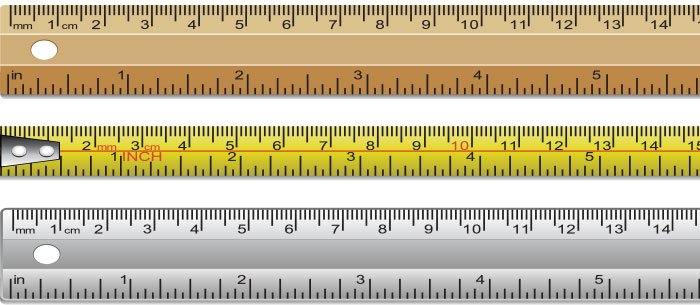This post is by Adam Cahill, founder of Anagram, an agency purpose built to help brands win in a programmatic world. Anagram uses MediaMath’s TerminalOne Marketing Operating System as its platform of record.
[divider]
“It is pointless to try to predict the future. But it is possible to identify major events that have already happened, irrevocably, and that will have predictable effects in the next decade or two. It is possible, in other words, to identify and prepare for the future that has already happened.” — Peter Drucker
I was first introduced to the world of programmatic by Darren Herman, who at the time was the founder of Varick Media Management. When Darren shared with me what he and others in the space were doing, it struck me as a perfect example of Drucker’s theory.
The predictable effect Drucker spoke about as applied to media was this: once an infrastructure existed that more efficiently connected buyers and sellers, all media would be transacted this way.
The foundational premise of Anagram is that programmatic is a future that has already happened. That it’s an inevitability that essentially all media will be programmatic, and that the transition toward a programmatic-led approach is the central theme of this marketing era.
Anagram is by no means the first or only company built on that premise. We’re now several years into programmatic, and many great companies have already established themselves as leaders. I suppose it would have been better to launch sooner, but, here we are.
If there’s any advantage to launching Anagram in 2015 it’s that the past few years have given me some perspective on where opportunities might still exist within programmatic. Gaps that haven’t yet been filled by pure adtech players, and approaches that have proven too difficult for legacy agencies and holding companies to adopt.
Based on those observations, these are the principles that describe how we’ll try to add value to the programmatic conversation, but more importantly, how we’ll try to create value for our clients.
A Flexible, Diversified Business Model
In the past few years the nature of relationships between clients and their marketing partners has changed. If you win a piece of business you can expect to pitch it again in two years or less. Agency of Record relationships and retainers are declining. Project work is increasing. And more and more work is being brought in-house.
I don’t interpret these developments as short-term trends. I think this is how it’s going to be from here on out. We’re building Anagram for this reality by offering three ways of working with us, so that clients can fit us into whatever their preferred model happens to be.
We can work in a typical agency structure, managing programmatic campaigns for clients on a retained or project basis. We can serve as consultants to clients that are bringing programmatic in house, helping them build their capability. And we can license products to clients that improve their performance without any services-based relationship.
I think it’s likely that a typical Anagram engagement will include managing campaigns in the short term, while simultaneously helping clients build their own programmatic operation internally. Once a client is up and running I imagine the potential for longer-term relationships will be oriented around products, not a services retainer.
Programmatic Throughout
Anagram is a programmatic marketing company. And that’s it.
Remember how Apple stopped shipping MacBooks with DVD drives when it was clear the world was going wireless? At the time many people still used DVDs, but Apple built for the inevitable end state. Yes, you can still buy lots of media in a manual way today, but you don’t need to, so we are shipping Anagram without the DVD drive, so to speak.
We’re already at the point where an entire digital plan can be done programmatically with very few trade-offs, if you have a bias toward making that happen. There are a growing number of brands who are interested in a programmatic-only solution, and our bet is that this trend will continue as more channels become available programmatically. As the space grows in importance we also think clients will be receptive to choosing a partner that is focused entirely on this market.
Quick bit of trivia about our company name. The “gram” part stands for “programmatic.” The root “ana” means “throughout.” So Anagram means “Programmatic Throughout.”
Purpose Built
Anagram is a programmatic marketing company, as opposed to a programmatic media company.
Our view is that programmatic marketing requires a purpose built approach that has three key elements: how you buy (media), what you make (creative), and how you work (process).
It sounds simple, but for an existing agency each of these three components run counter to deeply ingrained culture, systems, and business models. They’d have to change just about everything to deliver this way, and organizational change is incredibly difficult to bring about.
One of my favorite Rishad Tobaccowala quotes is “the future of advertising will not fit in the containers of the past.” I think agencies by and large have tried to make programmatic fit into old containers, when in fact it calls for an entirely new mindset.
You can tell this is the case when media agencies pit DSPs against each other on a media plan as if they are sites to be tested, when in fact they are core technology platforms that are built to holistically manage inventory. Or when planners say that programmatic is “just” for direct response, whereas programmatic is a way of transacting media that can be applied across any and all marketing objectives. Or when buying teams insist on bringing GRP-based planning into programmatic, taking an old model oriented around inputs and using it in an environment that is oriented around outcomes. Each of these is an example of reverting to old norms in a new world, which is a recipe for mediocrity.
Again, our view is that in a programmatic-led world, the approach to media, creative, and process all need to change dramatically. I don’t think you can succeed in programmatic without addressing all three of these elements, and based on what I’ve seen over the past several years I also don’t think you can solve for them unless you start from scratch, purpose built.
Programmatic Creativity
The aspect of Anagram that has generated the most enthusiasm since we launched is our focus on the creative possibilities of programmatic. Adexchanger and Digiday both honed in on this when they covered our launch, and most of the people I’ve talked to about Anagram immediately sense the opportunity around creative.
It seems to me that the programmatic space has grown without much thought to how creative fits in. And the truth is that creative matters a lot — probably more than media and targeting, if you agree with this comScore study, which is the only data on the topic I know of.
Our approach combines targeted media with an equal focus on creative and messaging. Our ambition is to use the wealth of data available to us to deliver people ads that they actually want to see, and our belief is that a data-informed approach to creativity will lead to performance lifts. If everyone is using the same set of buying platforms, then our aim will be to outperform by putting better creative into the platforms.
Agile Marketing
In my last role at Hill Holliday I had the great pleasure of working closely with our innovation and experience design teams, who were enthusiastic proponents of agile development.
The main thing I learned from them is that you can be the smartest person or team in the world, but until your idea comes into contact with real users, you don’t know anything. There’s a sense of humility to the agile approach that is very powerful, and that’s what guides our way of working at Anagram.
We’ve developed a process for programmatic marketing called SprintScale that is guided by the principles of agile development. The idea is to get into market as quickly as possible, be open to the feedback users deliver through their actions, and then adjust course. We go into the market with strong opinions and hypotheses about will work, but that’s just a starting point. Then we interpret, change, and expand based on what people tell us through their behavior. It’s about being right fast vs. being right in advance.
Transparency
It is no secret that it is easy to cheat clients when you are buying programmatically, and lots of companies are doing just that. “Cheat” is a strong word, but when a company is making money in ways that its clients don’t know about or don’t understand, that’s what it is.
Our preferred way of working solves for transparency by giving clients full access to and control over their programmatic platforms. As an example, Anagram uses MediaMath’s T1 Marketing Operating System as our platform of record. We recommend to clients that they establish their own contractual relationship with MediaMath, and then grant us the right to manage their campaigns. In this scenario there is really no way to extract hidden margins since we are in effect using the client’s tools, so transparency becomes a non-issue.
An added benefit to this approach is that as first party data becomes increasingly important, clients can have confidence that the data assets they are building and importing into platforms are theirs, not ours.
This makes it very easy for clients to part ways with us, which is just about the opposite of the typical agency strategy of trying to “own” the data as a way to create a sticky relationship. On the other hand, we think it makes Anagram easier and more enjoyable to do business with.
And so:
Anagram is a marketing technology company purpose built to help brands win in a programmatic world.
We have three engagement models — campaigns, consulting, and products — so that clients can work with us on their terms.
And we take a holistic approach to programmatic marketing that solves for media, message, and process, delivered with full transparency.











